To help people make nominations for the 2018 Hugo Award for Best Professional Artist, we have set up a "lightbox" system to let fans quickly flip through the works of over 113 artists listed below and to set aside the ones they particularly liked. Here's how it works:
When I did this myself, it took fewer than fifteen minutes to sift through the list, and I ended up with just 15 artists to choose from. It took about ten more minutes of browsing the artists' websites to cut that to five for my Best Professional Artist nominations.
WARNING: If you are on a limited data plan and view every picture in the lightbox, the full-size images come to about 90 MB total.
Note: Thumbnail images with a highlighted link are professional works done in 2017. Thumbnails without a highlighted link were done earlier (shown in last year's list), later (show in next year's list) or fan art (published in a semi-prozine) and included to give more examples of the artist's style.
Click here to jump to the artist list, or continue reading...
The artists listed below created art for professional magazines, standalone novellas, and books in 2017 that make them eligible for the 2018 Hugo Award for Best Professional Artist.
Most of the art consists of covers for magazines, anthologies, novellas, and illustrations for short fiction reviewed by Rocket Stack Rank in 2017.
Some of the art consists of book covers from the "year's best" science fiction and fantasy meta-list collated by John DeNardo at Kirkus Reviews. There are many many more books and magazines published in 2017 not included here, so this list is by no means complete.
Note that the artist is the person credited as the source of the cover/jacket art. If the source is absent or is a stock photography/illustration service (such as Shutterstock or Getty Images), we name the cover/jacket designer as the artist.
For folks interested in the history this category, John Picacio (winner 2012 and 2013) wrote A Visual History of the Best Professional Artist Hugo Award Winners that's a fun read. To understand the work that goes into creating a book cover, have a look at How Could The Winds of Winter Be Published In Only Three Months? For an in-depth look at creating covers for a series, read Lauren Panepinto's 13-part post on David Dalglish's Shadowdance series.
Go back to the 2018 Hugo Awards.
- In the artist list below, click on a thumbnail image. The lighbox should open, showing a larger image of the work.
- If you like the picture, ctrl-click (or long-press) the artist's name above it. That will reopen this page in a new tab with that artist's information at the top.
- Press the right-arrow key (or tap the picture) to advance to the next picture. Each new artist is preceded by the Hugo Award image.
- Once you've looked at all the pictures, go through the tabs you opened. For most artists there's a link to his/her website where you can find a gallery of their work.
- Browse the gallery and see if the picture you liked was representative of their work as a whole.
- Close the tabs of the ones you liked least.
When I did this myself, it took fewer than fifteen minutes to sift through the list, and I ended up with just 15 artists to choose from. It took about ten more minutes of browsing the artists' websites to cut that to five for my Best Professional Artist nominations.
WARNING: If you are on a limited data plan and view every picture in the lightbox, the full-size images come to about 90 MB total.
Note: Thumbnail images with a highlighted link are professional works done in 2017. Thumbnails without a highlighted link were done earlier (shown in last year's list), later (show in next year's list) or fan art (published in a semi-prozine) and included to give more examples of the artist's style.
Click here to jump to the artist list, or continue reading...
How Did We Choose These Artists?
Most of the art consists of covers for magazines, anthologies, novellas, and illustrations for short fiction reviewed by Rocket Stack Rank in 2017.
Some of the art consists of book covers from the "year's best" science fiction and fantasy meta-list collated by John DeNardo at Kirkus Reviews. There are many many more books and magazines published in 2017 not included here, so this list is by no means complete.
Note that the artist is the person credited as the source of the cover/jacket art. If the source is absent or is a stock photography/illustration service (such as Shutterstock or Getty Images), we name the cover/jacket designer as the artist.
For folks interested in the history this category, John Picacio (winner 2012 and 2013) wrote A Visual History of the Best Professional Artist Hugo Award Winners that's a fun read. To understand the work that goes into creating a book cover, have a look at How Could The Winds of Winter Be Published In Only Three Months? For an in-depth look at creating covers for a series, read Lauren Panepinto's 13-part post on David Dalglish's Shadowdance series.
Go back to the 2018 Hugo Awards.





































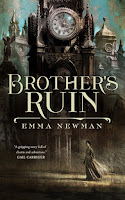

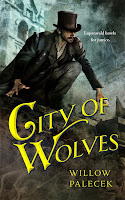
















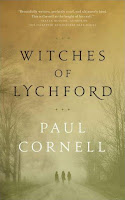







































































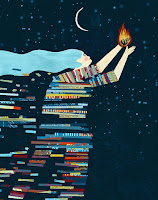




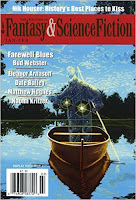














































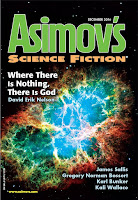


















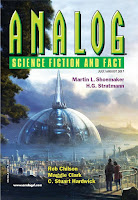













































































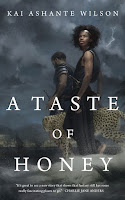



































Thanks for doing this. I've already decided my Hugo ballot for artists but this is a good way to do a final check.
ReplyDeleteYuku Shimizu's art for "eyes I dare not meet in dreams" by Sunny Moraine was new even though the story wasn't.
ReplyDeleteThanks for the info. My spreadsheet doesn't have a separate column for image date for exceptions like this (the image inherits the date of the story/issue) so I can't auto-regenerate this page to fix it. Fortunately, Yuko has two other images for 2017 so she still qualifies for the category.
Delete